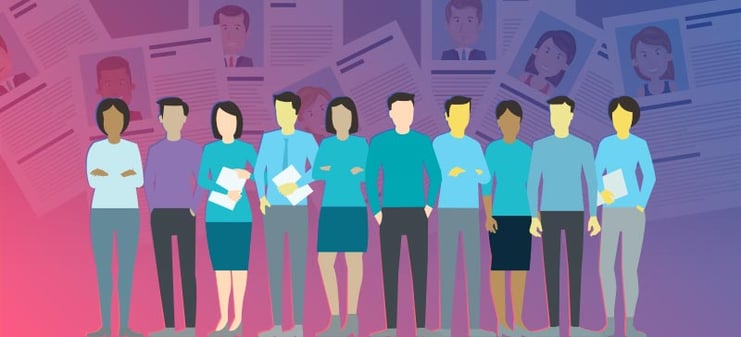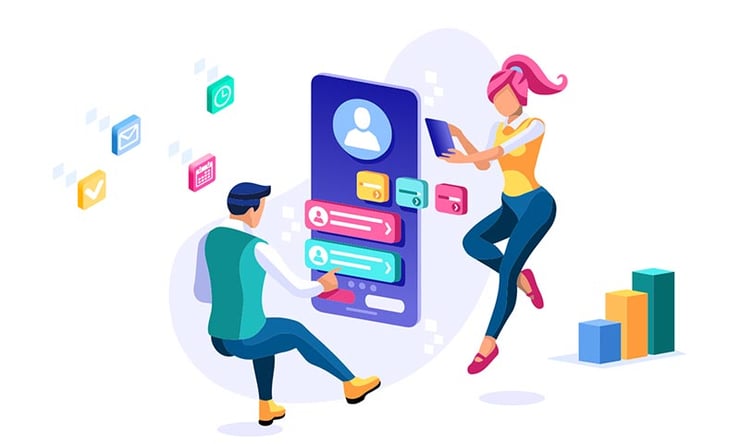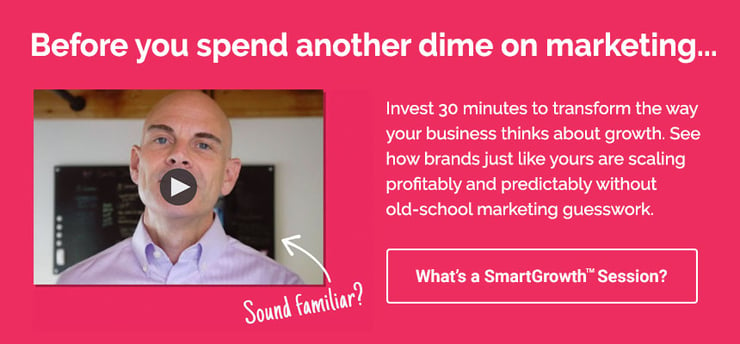Who are your ideal customers? How well do you know them? What are their needs and wants? Where do they get information? How do they prefer to communicate?
You won't be able to position what you're selling to meet their needs without first understanding their backgrounds, goals, challenges and behaviors. In fact, the more you know, the more likely you’ll be to reach your business goals. In order to grow, you need to understand those ideal customers inside and out and integrate that knowledge across your entire business. In this article, you'll learn how to accomplish this with the help of personas.
What are Personas?
A persona is a fictional representation of a business’ ideal customer. Often called buyer personas, marketing personas or customer personas, they typically take the form of a profile — complete with name, demographic and behavioral information. They are used for B2B and B2C marketing, sales, product, and services to guide strategies for connecting with new prospects, customer acquisition and retention.
What Are Negative Personas?
Whereas a buyer persona is a representation of an ideal customer, a negative — or “exclusionary” — persona is a representation of who you don’t want as a customer.
This could include, for example, professionals who are too advanced for your product or service, students who are only engaging with your content for research/knowledge, or potential customers who are just too expensive to acquire (because of a low average sale price, their propensity to churn, or their unlikeliness to purchase again from your company.)

What's the ideal number? It varies, but 2-5 personas is common for most businesses.
How Many Personas Do You Need?
With persona defined, let’s consider how many your business might need. A strong buyer persona will be based on market research, as well as on insights gathered from actual customers (through surveys, interviews, etc.). These insights are often the key to identifying and grouping your most common buyers. Most businesses have between 2-5 personas, but the ideal number can easily range from 1-20 depending on the company and industry.
How Can You Use Personas?
At the most basic level, personas allow you to personalize or target your marketing for different segments of your audience. For example, instead of sending the same lead nurturing emails to everyone in your database, you can segment by buyer persona and tailor your messaging according to what you know about those different personas.
If you take the time to create negative personas, you’ll have the added advantage of being able to segment out the “bad apples” from the rest of your contacts, which can help you achieve a lower cost-per-lead and cost-per-customer (and see higher sales productivity).
When combined with lifecycle stage (i.e. how far along someone is in your sales cycle), buyer personas also allow you to map out and create highly targeted content.

How to Create a Persona:
Buyer personas are created through research, surveys, and interviews of your target audience. That includes a mix of customers, prospects, and those outside of your contact database who might align with your target audience.
Pro tip: Consider naming your personas with their job title or industry in mind to make it easier to remember, like "CMO Carol" or "Real Estate Ron."
Here are some practical methods for gathering the information you need to develop personas:
- Interview customers either in person or over the phone to discover what they like about your product or service.
- Look through your contacts database to uncover trends about how certain leads or customers find and consume your content.
- When creating forms to use on your website, use form fields that capture important persona information. (For example, if all of your personas vary based on company size, ask each lead for information about company size on your forms. You could also gather information on what forms of social media your leads use by asking a question about social media accounts.)
- Take into consideration your sales team's feedback on the leads they are interacting with most. (What types of sales cycles does your sales team work with? What generalizations can they make about the different types of customers you serve best?)
- Key questions to ask yourself: Who should be involved in creating your buyer personas? What kinds of information does your marketing team likely need included in a persona? What kinds of information does your sales team likely need included in each persona? What is the relationship between your company’s purpose and your buyer personas?
"You won't be able to position what you're selling to meet their needs without first understanding their backgrounds, goals, challenges and behaviors."
Use Your Personas to Improve Marketing, Sales and Service:
There are a number of different ways to rework your strategy with your personas in mind. To help you better understand the value of the resource you’ve just created, check out the game-changing ideas below:
1. Reallocate your ad spend.
After creating your personas, you’ll have a better understanding of where your personas spend their time online. And, ideally, you’ll also know what their favorite online publications and news sources are. Armed with this knowledge, you can audit where you’re currently spending resources (e.g. on Facebook ads, retargeting, etc.) and reallocate those resources based on your persona research.
2. Reallocate your human resources.
The same principle can be applied to personnel: If you know the majority of your audience is on Instagram, you'll want to make sure you — or someone on your team — is regularly monitoring that network and engaging with people who belong to your target persona. The goal here isn't to hunt people down — instead, you just want to make sure you're hanging out where your personas are hanging out.
3. Use language that your persona is familiar with.
Once you know how the people in your different persona groups communicate, start speaking their language. Use the buzzwords they use. Use the slang they use. This will help to ensure your message resonates.
4. Segment your list of contacts by buyer persona.
List segmentation is the key to delivering more personalized experiences to your leads and customers. Once you’ve segmented your list by buyer persona, you’ll be able to do all sorts of fun stuff.
5. Create a piece of content with a specific persona in mind.
Creating buying personas gives you an enhanced knowledge of what your ideal customers like and respond to, as well as what they struggle with. Using those insights, you can create a targeted ebook or blog post that solves a common problem — or answers a common question — that a particular persona has. And if you’ve segmented your contacts list by buyer persona, guess what? You can easily share that piece of content with just the group of contacts who you know will be interested in it.
6. Audit your existing content for persona alignment.
Perform an audit of all your content and try to figure out which persona each piece aligns with. If you discover content that doesn't align with any of your personas, you might to consider updating it or — if it's had zero success in generating leads — just get rid of it. At the end of the day, to attract the right people, you need to create the right content.
7. Combine personas with lifecycle stages to map out content ideas.
In addition to targeting content according to personas, you can target content according to another dimension: lifecycle stage. Lifecycle stage refers to how far along someone is in your sales cycle (and how close they are to making a purchase). By adding this dimension to the mix, you can ensure that you're not only creating the right content for the right people, but that you're also creating it for them at the right time.
8. Optimize landing pages for personas.
When you offer up a new piece of targeted content, make sure that the accompanying landing page conveys to your persona — in their language — how that content can help them solve a problem or add value to their lives.
9. Use dynamic content to tailor your website to different personas.
Say goodbye to the one-size-fits-all website. With dynamic content, you can display different messaging to different people based on what persona you have them assigned to.
10. Do some co-marketing with companies that your personas follow.
Whether it's a webinar, a co-written ebook, or simply a guest blog post, working with other businesses that you know a particular persona likes and respects can score you some serious street cred.





.png)
.png)
.png)